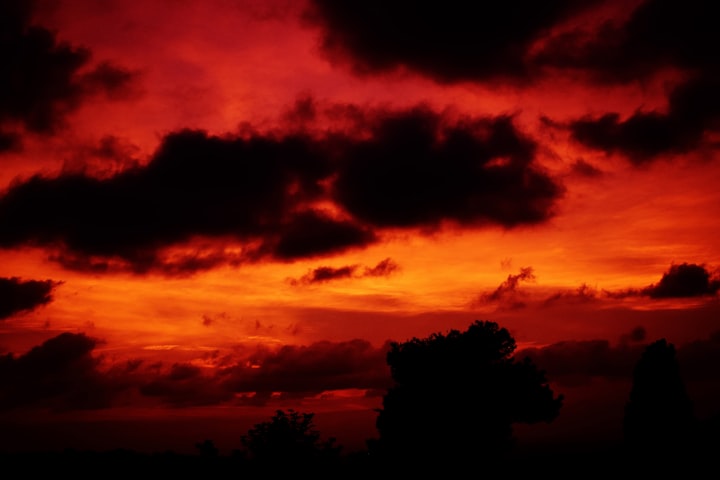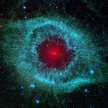You Could Call It a Hellish World
I Am Describing the Planet Venus.

British spelling
Mercury is the closest planet to the Sun, and Venus comes in second at an average distance of just over 108 million kilometres.
You would think that Mercury, being the closest planet to the Sun, would be the hottest, but no, Venus has the title of being the hottest planet in the Solar System.
It is also the second-brightest object in the night sky, with the moon being the brightest. Venus is a little smaller than the Earth, with a diameter of 12,100 kilometres. It takes just over 224 days to complete its orbit around the sun, which is known as a Venusian year.
Surprisingly, a day on Venus is longer than its year, taking an incredible 243 Earth days to complete one turn on its axis. Another strange thing about Venus is that it turns on its axis in a clockwise direction, opposite from the other planets in the Solar System. This means the sun rises in the west and sets in the east.
The first successful mission to Venus was Mariner 2, which was launched in August 1962 and passed Venus on December 14, 1962. As of November 2023, a considerable amount of information has been gathered from the 20 successful space missions that were sent to Venus. Over 20 missions were failures. These space missions are not easy and don't always go according to plan.

Image Credit: NASA/JPL
The surface was found to be covered with craters, volcanoes, mountains, and big lava plains. The surface of Venus is very hot; temperatures can reach 475 degrees Celsius, hot enough to melt lead.
It has a thick, heavy atmosphere stretching up 80 kilometres from its surface and is made up mostly of carbon dioxide and sulphur clouds, which trap the sun's heat below, causing a greenhouse effect.
A square centimetre column of air measured from sea level to the top of the Earth's atmosphere has a mass of about 1.03 kilograms. The atmospheric pressure on the surface of Venus is over 90 times that of the Earth.
Venus was found to have a very weak magnetic field, probably due to its very slow rotation speed.
Is it possible that in the distant past, Venus harboured some life? It is thought to have had flowing water on its surface for about 2 billion years, with a climate similar to Earth's.
That changed roughly 700 million years ago when the high temperatures produced by the greenhouse effect boiled off the water, leaving the dry, harsh conditions that we see today.
Like Mercury, Venus has no moons.
---
Here is another of my articles, if you have the time to read it.
---
Gravity is the weakest of the four fundamental forces.

The four fundamental forces identified in the universe are gravitational force, electromagnetic force, strong nuclear force, and weak nuclear force.
Gravity is the weakest of all the forces and has existed since the beginning of the universe 13.8 billion years ago. Gravity waves travel at the same speed as light, which is 1,080 million kilometres per hour.
Mass is a combination of the total number of atoms and the density of the atoms in an object. Everything in the universe is made up of matter, and the bigger an object is, the more mass it has.
Mass is measured in kilograms or (kg). Objects with much mass are harder to move or stop than objects with less mass.
The mass of an object can only change if you add or remove matter. You can place an object in different parts of the universe, but it will always have the same mass. Weight is not the same as mass, as you will see in the next paragraph.
The weight of an object is the force of gravity acting upon it, which can change if the force of gravity changes. I weigh 80 kilograms here on Earth, but if I took the next flight to the Moon and weighed myself there, I would be just over 13 kilograms. The reason is that the Moon has less mass, so its gravity is also much less than that of the Earth.
On planet Mars, my weight would be just over 30 kilograms, and if I were floating far away in outer space, my weight would be zero.
Here is another interesting fact about gravity: if you were to take a heavy steel ball and a feather to the top of a high building and drop them both at the same time, then it would be no surprise when the steel ball lands on the ground first, the feather is being slowed by the resistance of air.
Now place that heavy ball and feather in a vacuum and release them both at the same time. No matter how high they are, they will both reach the ground at exactly the same time.
Without gravity, there would be no structure in the universe; it holds everything together, and that is the main reason we have star systems and galaxies.

Image by PIRO4D from Pixabay
Have you ever wondered why large heavenly bodies have a spherical shape? That is also because of the force of gravity.
Imagine our planet. Gravity, in its core, pulls inward in every direction, causing the rounded shape we see throughout the universe. Some smaller celestial objects are potato-shaped as their gravity is not strong enough to pull them into that familiar round shape.
A neutron star has a very strong gravitational force due to the enormous mass packed into its small area, but the object with the most gravity by far is a black hole. Get too close to one, and there will be no turning back.
Even light, with a speed of almost 300,000 kilometres per second, cannot escape its massive gravitational grip. Hence its name: a black hole.
The end
About the Creator
A B Forbes
Someone with a lifelong passion for that gargantuan area we call the universe. I also write stories about life itself. Enjoy






Comments (2)
it's well-crafted and offers valuable information.
very informative use some keywords too like i do to get more reach